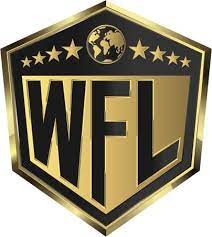by Dane McGuire
Mark your calendars, fight fans. Former WSOF executive Darren Owen’s team/league-based World Fighting League debuts February 5 with three events in one day and a fourth February 6.
As has been reported previously, teams are made up of 24 fighters spanning the eight weight classes of: featherweight, lightweight, welterweight, middleweight, light heavyweight, heavyweight, women’s flyweight, and women’s bantamweight.
Teams will have three fighters per weight class and make up four conferences: North America, South America, Europe/Africa, and Asia/Oceania.
Owen has said the WFL business model is “essentially it’s a copy-paste of all the stuff that already works, but obviously, we have to dial it in specifically for the sport of MMA.”
Unlike the team-based International Fight League which folded in 2007, revenue will be split 50-50 with fighters.
“Eventually, [the fighter’s revenue] will be divided in salary cap, but year one is going to be a little bit unique because we don’t know our revenues,” he said. “So everything we’re doing, our contracts are all set that it’s an and/or basis, so you’re either going to get paid your negotiated amount, or you’ll get 50 percent of the revenue from that specific event that you competed in.”
Owen didn’t name team owners due to non-disclosure agreements but has said former Titan FC executive Joe Kelly and David Loiseau, who was a teammate of Georges St-Pierre, are involved with the organization.
Reportedly, six franchise owners have already signed on.
Notable MMA journalist Ariel Helwani reported:
“The group is made up of several former and current professional athletes from the world of NFL, NBA and MMA, including multiple MMA world champions, five former respected MMA promoters, former MMA executives and matchmakers, actors and recording artists.”
“Any approved franchise owner has signed agreements that enforces certain terms and conditions they must abide by,” Helwani wrote.
“Some of these provisions are put into place so they will not be able to take more than a 50 percent revenue share. Additionally, per sources, they must provide specific levels of health insurance, career-ending insurance, and pension plan for their athletes. When the union is established, the plan is for athletes and owners to finalize negotiations and agreements.”
The WFL will reportedly need to have 192 contracts in place to meet plans to have eight teams in each of the four WFL conferences. Own said there is a possibility the league could later expand to a maximum of 24 teams.
It has been reported the athlete signing process will officially begin on January 1, 2022.
Owen said during a recent appearance on The MMA Hour that during the year-plus delay between fighters signing and competing, they are free to work with other promoters, “but will be offered “guaranteed contracts” for their time in the WFL as well as “insurances” for fighters that will help them with injuries suffered during training camp” an MMAFighting report says.
The WFL is still talking with broadcast partners.


